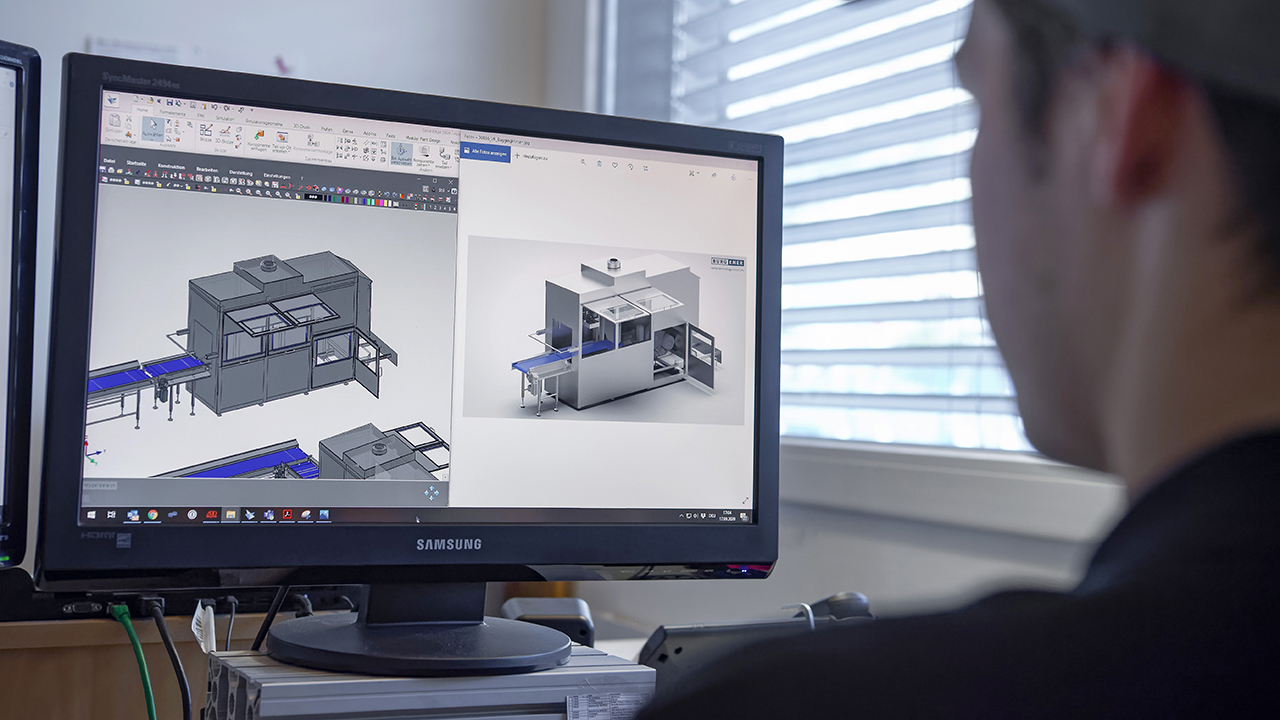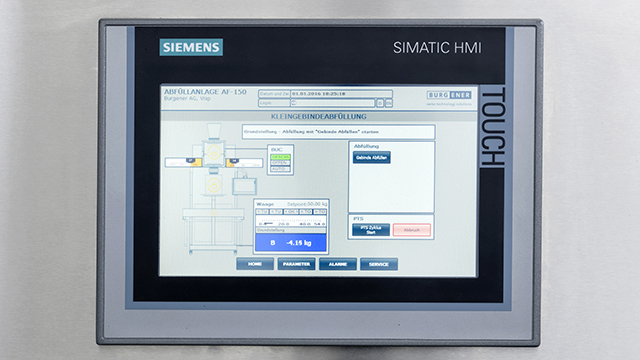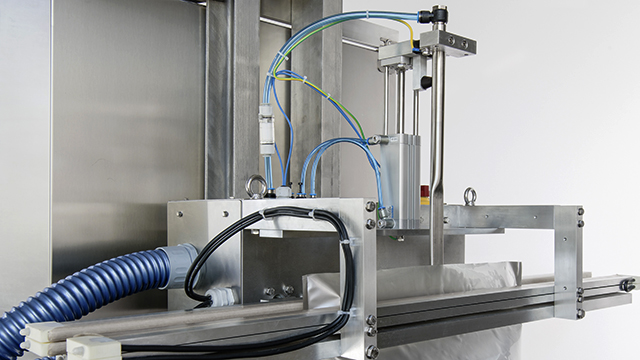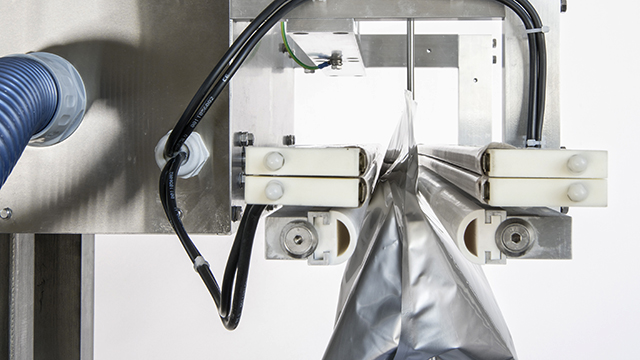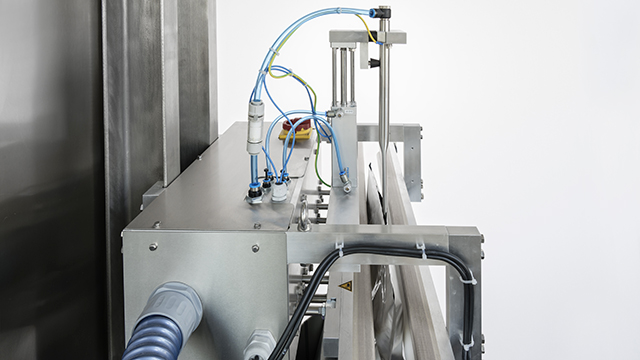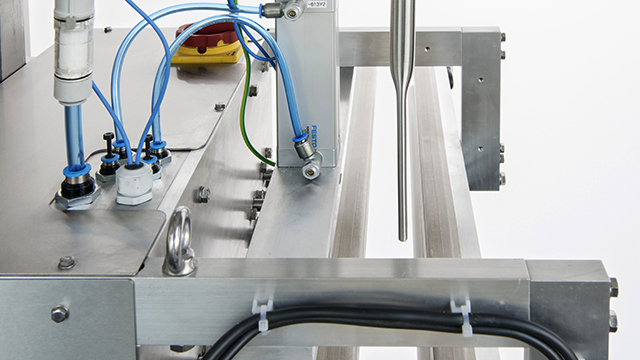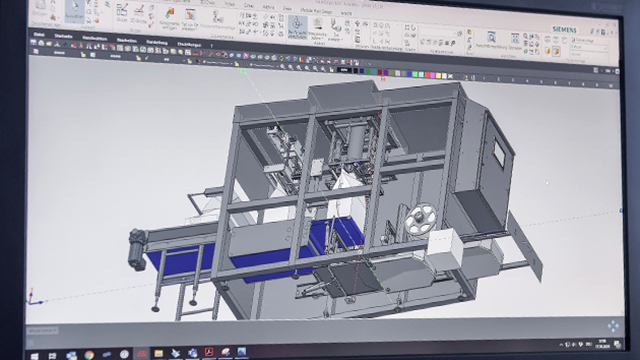Leveraging a comprehensive digital twin to increase sales by 10 to 15 percent
Leveraging a comprehensive digital twin to increase sales by 10 to 15 percent
Solid Edge and Teamcenter enable Burgener to optimize components prior to production
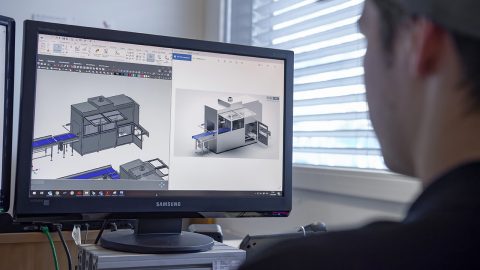
Embracing digital change
Somewhere in the world a manufacturer of pharmaceutical products is reviewing its plans for a new, fully automatic Burgener filling system with the integrated welding module, which will be used to package and seal products for distribution. The system looks good, but there is one module the customer does not like, so he deletes it with no fuss. Could it be that easy? Yes, thanks to Solid Edge® software, a comprehensive product development solution, this vision is a reality. Burgener AG (Burgener), an industrial equipment supplier based in Visp, Valais, Switzerland, uses Solid Edge, which is part of the Xcelerator™ portfolio, the comprehensive and integrated portfolio of software and services from Siemens Digital Industries Software, to create a comprehensive digital twin of its systems as early as the design phase. This allows customers to review and approve a tailor-made system before Burgener designs the first component. In addition to benefitting the customer, creating a digital twin also has advantages for Burgener.
“In terms of marketing, we have already made a quantum leap with Solid Edge,” says Remo Imoberdorf, chief executive officer (CEO) of Burgener. “We imported existing CAD data of one of our fully automatic systems, including conveyor technology and palletizing with robots, into the Solid Edge environment and generated 3D images of the machines with the rendering function. With the help of these pictures, we were able to convince the customer of our capabilities and were awarded the contract for the project. The switch to Solid Edge can already be attributed to an increase in sales of 10 to 15 percent.”
“We assume that with this approach we will soon save up to 50 percent time over the entire development period,” says Benjamin Pfammatter, a design engineer at Burgener.
Leveraging crisis to spur innovation
Burgener is driving digitalization and it is no coincidence the machine and plant manufacturer tackled this project during the Covid crisis.
As a company that is constantly seeking to improve, Burgener regularly questions its processes. However, after covering the expenses of day-to-day business, there is often a lack of resources to address changes. When the economy collapsed during the crisis, the order volume fell so Burgener responded with a bold step toward the digital future.
When the pandemic led to a decline in orders, Burgener AG in Switzerland made a virtue out of necessity, digitalizing its processes and strengthening its market position.
“The pandemic literally forced us to use the time and implement ideas that had slumbered in our heads for some time,” says Imoberdorf. The company also knew it needed to replace its outdated computer-aided design (CAD) system. In addition, there was a lack of intelligent database functions, which caused unnecessary work for employees.
“We don’t want to scare off our good specialists with tedious, hard work,” explains Imoberdorf.
Integrated solution in six months
Burgener was looking for a promising solution across the value chain, in which CAD, automation and product lifecycle management (PLM) would be integrated. In June 2020 the company contacted Cytrus AG, a Siemens partner, which worked out a comprehensive digitalization strategy within a short period of time. Burgener quickly chose the modern and adaptable solutions from Siemens.
“We were won over by the consistent portfolio,” says Imoberdorf. “We have been relying on controls and automation components from Siemens for a long time. So we have everything from one house.” Cytrus implemented the product lifecycle management solution Teamcenter® software, which is also part of Xcelerator, and integrated the product development tool Solid Edge. After validating the suitability of the solution, the integrator trained the Burgener employees.
After just six months in January 2021, the system was fully operational. The first increases in efficiency quickly became apparent: Thanks to Teamcenter, all employees have access to plans and concepts for existing systems in the database. Anyone who develops new components can check whether a similar solution has already been designed and does not have to completely reinvent everything. This saves a lot of time and prevents duplication.
“Our employees are very open and enjoy the modern systems,” Imoberdorf says proudly. “The fact that we can implement the comprehensive digital solution in such a short time is also thanks to their willingness to change.”
The mechanical and, in some cases, the electrical design, are integrated in Teamcenter; this data no longer needs to be managed manually. The alliance with automation technology took place by connecting Teamcenter with the TIA Portal at the beginning of 2021. Projects that were created in the TIA Portal are managed in a version-safe manner in Teamcenter and the versions of the projects can be linked directly to the design data. This not only saves tedious typing or comparing data, but also simplifies service and maintenance. “With Teamcenter, all parts of a system are clearly listed. Burgener knows which components are installed where and can replace them before a system comes to a standstill,” explains Christoph Renker, CEO of Cytrus AG. This simplifies quality assurance and increases the availability of the customer’s systems.
“Thanks to version management in Teamcenter, we are already able to construct our standard welding machines 50 percent faster than before,” says Imoberdorf.
Worldwide operations
Burgener supplies companies from the food, chemical and pharmaceutical industries with highly specialized systems, which, for example, are used to fill and weld products in powder form in a sealed and contamination-free manner. The systems are used worldwide. Burgener only has one location in Visp. The systems are entirely manufactured there; from construction and electrical planning and control logic and programming to mechanical production and partial locksmith production. Finally, the systems are set up in the assembly hall and tested as close to reality as possible with a demo product. “Then the customer comes to Visp to see how the system works, from as far away as China and Southeast Asia, “says Imoberdorf. This procedure means a great deal of effort for everyone involved. Thanks to the new solution, the systems are planned digitally and customers can check the digital twin with photos and films of the real system. In the future, checks before delivery can also be carried out digitally.
Greater security thanks to digitization
The holistic digital solution from Burgener also offers advantages in terms of operation and maintenance: The company can maintain the systems from Visp and analyze error messages remotely – especially in times like the Covid crisis when it is important for their global customers such as Novartis and BASF. In this way, the functionality of the systems is always guaranteed, even if travel is restricted. In addition, during a pandemic, the availability of production becomes more important to avoid delivery bottlenecks for urgently needed pharmaceutical products. Seen in this way, Imoberdorf believes the crisis also offered opportunities: “The virus has made it clear how important digital solutions are to keep production running any time and anywhere.”
Strengthened for the digital future
The Siemens portfolio is helping to propel Burgener to a digital future: With the product development environment Solid Edge and the TIA Portal, new machines and systems cannot only be assessed and tested as a digital twin, but engineers can integrate the digital twin into a simulation and thus put the hardware and software through their paces before production begins. In this way, components can be optimized before the first part of the new system goes into production and Burgener detects any errors as early as the design phase. This saves time and substantially reduces risks.
“Our customers will benefit. Thanks to our newly created transparency, we are agile and can react immediately to customer requests and new requirements, even when the world is upside down,” says Imoberdorf. “That increases our competitiveness. With the digital update, we are right at the forefront.” This is also confirmed by Renker, who says, “Such an open-mindedness and readiness for change helps a company of this size to become a market leader and navigate it into a successful digital future.”
Burgener relies on Siemens products for its digitization strategy: Teamcenter with the integrated Solid Edge portfolio and TIA Portal. As the data backbone, Teamcenter connects people and processes across disciplines throughout the product lifecycle. With Solid Edge, a complete portfolio of product development tools for mechanical and electrical design, simulation, manufacturing, technical publications, and more, the systems are digitally developed and validated in 3D. This creates a comprehensive digital twin of the system that can be mapped virtually using augmented reality techniques.
“Now that we are using Solid Edge and Teamcenter, we are able to store a clean structure of core modules and submodules,” says Imoberdorf. “Once a core module has been determined, we start drawing in Solid Edge and record the data in Teamcenter.
“With the fantastic version management features of Teamcenter, the modules are perfectly stored and quickly adaptable. This approach to core and submodules is a new part of our customer-specific mechanical engineering. We didn’t have this feature with our old CAD systems. As a result of this change, the designers are already seeing about a 30 percent time savings.”
Read the full case study.
